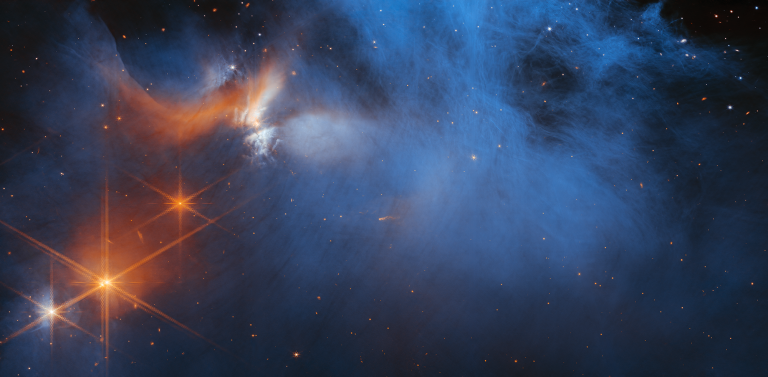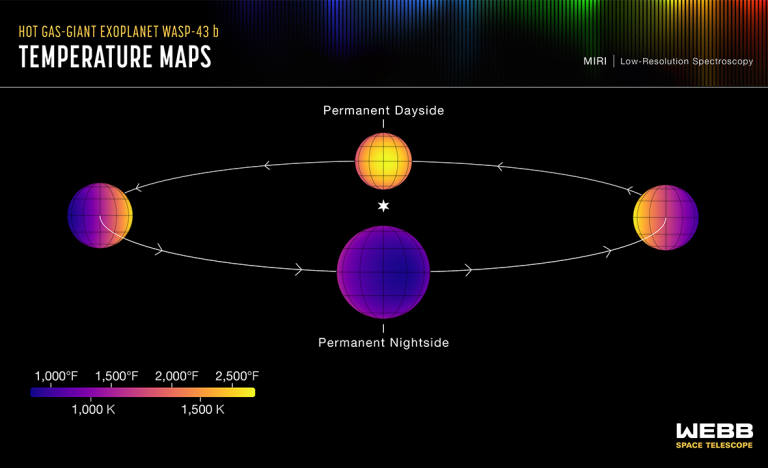NASA的SPHEREx太空望远镜将寻找生命的基本组成成分
那些可能在遥远的行星和卫星上形成海洋的水究竟在哪里?NASA的SPHEREx天体物理任务将对银河系展开搜索并进行全面调查。

那些可能在遥远的行星和卫星上形成海洋的水究竟在哪里?NASA的SPHEREx天体物理任务将对银河系展开搜索并进行全面调查。

利用NASA的詹姆斯·韦伯太空望远镜,研究人员终于证实了之前模型预测的结果:一颗系外行星的早晚大气存在差异。WASP-39 b是一颗巨大的行星,其直径比木星大1.3倍,但质量与土星相似,围绕距离地球约700光年的一颗恒星运行。这颗行星受到潮汐锁定,这意味着它拥有一个恒定的昼面和一个恒定的夜面——行星的一侧始终暴露在其恒星之下,而另一侧则始终笼罩在黑暗中。

研究人员使用NASA的詹姆斯·韦伯太空望远镜可能已经探测到巨蟹座55e周围的大气气体,这是一颗距离地球41光年的炽热岩质系外行星。这是迄今为止太阳系外岩质行星存在大气层的最佳证据。

请参阅说明。单击图片将下载可用的最高分辨率版本。

科学家们发现,两颗巨大的系外行星发生灾难性碰撞后产生的发光云团遮蔽了一颗恒星。

一颗新发现的“超级地球”位于其母星的宜居带,可能有一个大小与地球差不多的伴星。

2024年1月26日 Epsilon Tauri: Star with Planet Image Credit & Copyright: Reg Pratt Explanation: Epsilon Tauri lies 146 light-years away. A K-type red giant star, epsilon Tau is cooler than the Sun, but with about 13 times the solar radius it has nearly 100 times the solar luminosity. A member of the Hyades open star cluster the giant star is known by the proper name Ain, and along with brighter giant star Aldebaran, forms the eyes of Taurus the Bull. Surrounded by dusty, dark clouds in Taurus, epsilon Tau is also known to have a planet. Discovered by radial velocity measurements in 2006, Epsilon Tauri b is a gas giant planet larger than Jupiter with an orbital period of 1.6 years. And though the exoplanet can’t…

2023年9月20日 Methane Discovered on Distant Exoplanet Illustration Credit: Ahmad Jabakenji (ASU Lebanon, North Star Space Art); Data: NASA, ESA, CSA, JWST Explanation: Where else might life exist? One of humanity’s great outstanding questions, locating planets where extrasolar life might survive took a step forward in 2019 with the discovery of a significant amount of water vapor in the atmosphere of distant exoplanet K2-18b. The planet and its parent star, K2-18, lie about 124 light years away toward the constellation of the Lion (Leo). The exoplanet is significantly larger and more massive than our Earth, but orbits in the habitable zone of its home star. K2-18, although more red than our Sun, shines in K2-18b‘s sky with a brightness similar to the Sun in Earth’s sky….

一颗年轻的行星绕着一颗暴躁的红矮星旋转,它的轨道正在以不可预测的方式变化。

NASA的詹姆斯·韦伯太空望远镜的MIRI(中红外仪器)进行的新测量发现,该系统的内盘距离恒星不到1亿英里(1.6亿公里),可能是岩质类地行星形成的区域发现了水蒸气。(地球的轨道距离太阳9,300万英里。)